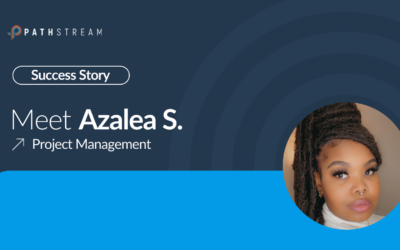What is data collection, and why is it important?
There’s no better way to determine the progress of your project and the tweaks that need to be done than undertaking data collection. In project management, teams need to gauge the effectiveness of their strategies. In doing so, they can implement strategies for overcoming whatever challenges they might encounter.
Data collection entails gathering and gauging information on project-related variables of interest. Typically, this is done systematically by asking stated research questions, testing hypotheses, and evaluating outcomes. In project management, data collection aims at ensuring that reliable and information-rich data is collected for data analytics. Ultimately, the project teams can make data-driven decisions.
Most common data collection methods
The method you use to collect your data determines its accuracy, relevance, and completeness. Here are the data collection methods you may want to use in your next project:
Surveys
Surveys are questionnaires for gathering quantitative and qualitative data from research subjects. It could be a sheet containing questions to ask your team at the end of a project. Such a survey allows you to gain insights into their feeling about the project, aspects they enjoyed, and areas they feel you can improve on in the next project.
You can send out a survey digitally or physically. Thus, this data collection method is excellent for distribution at scale. Surveys are also relatively expensive if you use free survey tools. Likewise, they are effective if you’re targeting a specific group. On the downside, biases may come into play when using surveys for data collection. These include:
- Subject bias
Your survey subjects know that you’ll read their responses. For this reason, some may provide answers biased toward what’s socially acceptable—these water down the relevance and accuracy of your data. You can avoid subject bias by deploying other data collection methods to complement the survey data with behavioral data.
- Collection bias
When you become a project manager in charge of data collection, it’s easy to write survey questions with a prejudiced lean. If your wording is biased, the chances are that your subjects won’t provide honest answers. This is something to consider when creating your research questions.

Transactional data tracking
This data collection method is excellent for gaining valuable insights about your organization and its customers. It’s particularly effective for businesses that deal with customers directly. Whether you have a brick-and-mortar or online store, transactional data tracking can provide valuable insights that you can leverage to provide better customer service and scale.
The transactional data you collect can be stored in a Salesforce administration tool. It may come from your POS system, web store, or the third parties you contract to run your online store and provides insights into customer behavior, the most popular products, and even the number of products you sell. An advantage of transaction data tracking is that it allows you to store critical data as it’s generated. Thus, it’s an all-in-one data collection method that pays off in the form of valuable customer insights.
Interviews and focus groups
Whenever data collection gets mentioned, interviews come to mind, and it’s easy to see why. They are the most common data collection method in qualitative research and entail interviewing the subjects and collecting data from them directly. Since one-on-one interviews have a personal approach, they’re excellent for gathering highly personalized data.
If it’s impossible to meet the subject in person, the interviewer can opt for a telephonic interview. On the flip side, this data collection method is tedious and time-consuming since it entails repeating the same process and questions to multiple participants. Thus, it’s only suitable if you have a few respondents.
Unlike one-on-one interviews, focus groups involve discussions with several people to gather critical data. Focus groups come in handy when you don’t have the resources to conduct one-on-one interviews or when you need to recreate specific social situations to garner critical data on people’s behaviors and attitudes.
Ideally, focus groups should have a moderator and three to ten participants. There should be a common denominator for all the group members depending on your research objectives and the intended use of the data. For instance, if you’re undertaking a study on the poor performance of SMBs, your focus group participants should be SMB owners or managers. Education, marital status, age, and other parameters don’t have to be similar.

Observation
Direct observation is a passive yet effective data collection method. As the name suggests, it entails participating and observing the subjects as they undertake their business. In this case, you collect data by taking notes, pictures, and audiovisual recordings of your subjects’ activities.
Thanks to the participatory nature of this data collection method, it can also lead to bias. The researcher’s opinions and attitudes may get influenced by their passive involvement in the study. That’s particularly the case if they know they’re under observation. Moreover, the fact that the researcher participates can affect the naturalness of the subjects’ actions and behavior.
Although observation is less accessible than most data collection methods, it provides first-hand insights into your subjects’ actions and behaviors. If you run a physical store, for instance, this data collection method can help you see how shoppers interact with your products. You can leverage the quantitative and qualitative data garnered to improve weak areas or double down on success areas.
Online tracking
In today’s tech-savvy world, you don’t need to look beyond your business to collect valuable data. If you have a business app or website, it can be an excellent tool for online data tracking. When someone lands on your website, they leave numerous data points. Online data tracking entails checking the number of site visitors, how long they stayed on the site, what they checked out, and more.
Your web hosting service can collect this data on your behalf, but you may leverage data analytics software. Another easy way to track online data is by placing pixels on your website to place and read cookies and help you track user behavior.
Inserting a pixel on your site is free and relatively easy. Once in place, they can collect valuable data without much maintenance or human intervention. Nonetheless, it’s best to remember that tracking your customer’s online actions and behavior can raise ethical and legal concerns. For this reason, ensure you comply with industry and local data privacy regulations.
Forms
These are excellent tools for collecting qualitative data about your subjects. Forms are particularly effective when collecting your subjects’ contact information or demographic data. Setting them up is pretty inexpensive and straightforward, and you can also deploy them to get registrations for mail newsletters, webinars, and more.
The questions outlined in data collection forms are always straightforward and require concise answers. Thus, you can use the data to create your customers’ demographic profiles, send content recommendations and marketing emails, and contact anyone else who might be interested in your products.
Social media monitoring
Social media has significantly permeated all aspects of modern life. It enhances your understanding of your followers and the audience you should target. Besides allowing you to connect with your audience, it can be an excellent data collection tool. For instance, you can browse your Facebook follower list to check who follows you and their common characteristics.
Most social media platforms provide brands with insights into how their posts perform, but third-party tools can provide even more detailed insights. Therefore, social media monitoring is an essential data collection method you can leverage to understand your audience better. Social media monitoring also allows you to track your brand’s mention on social media by setting up alerts or leveraging third-party monitoring software.
Collecting registration and subscription data
Another data collection method is offering your customers various incentives for providing relevant information about themselves. An easy way to do so is by asking customers to provide basic information when they land on your site or requiring them to subscribe to your email list to join a rewards program.
An advantage of this data collection method is that the leads you may covert because they’ve already shown an interest in your brand. Nonetheless, create the right balance regarding the amount of data you ask for. Potential research subjects may be turned off if you ask for too much data. Similarly, not asking for enough data means whatever you get may not be useful.
Key takeaways
Collecting accurate and high-quality data is critical to your organization’s success. Accurate data provides a well-informed picture of your organization, enabling you to make better decisions. That’s particularly true for organizations looking for ways to transform their business.
However, your organization may have posted more data analytics jobs than there are individuals with strong data analytics skills available to fill these positions. At Pathstream, we recommend you look beyond traditional talent acquisition strategies and tap into your current workforce, particularly those on the frontlines. Pathstream is an excellent platform for you. It’s designed to help you create transparent career pathways for your frontline teams and equip them with new skills that translate into long-term results and business success. Learn more about our approach to career mobility and digital transformation.
Was this helpful?
Thanks! What made it helpful?
How could we improve this post?








